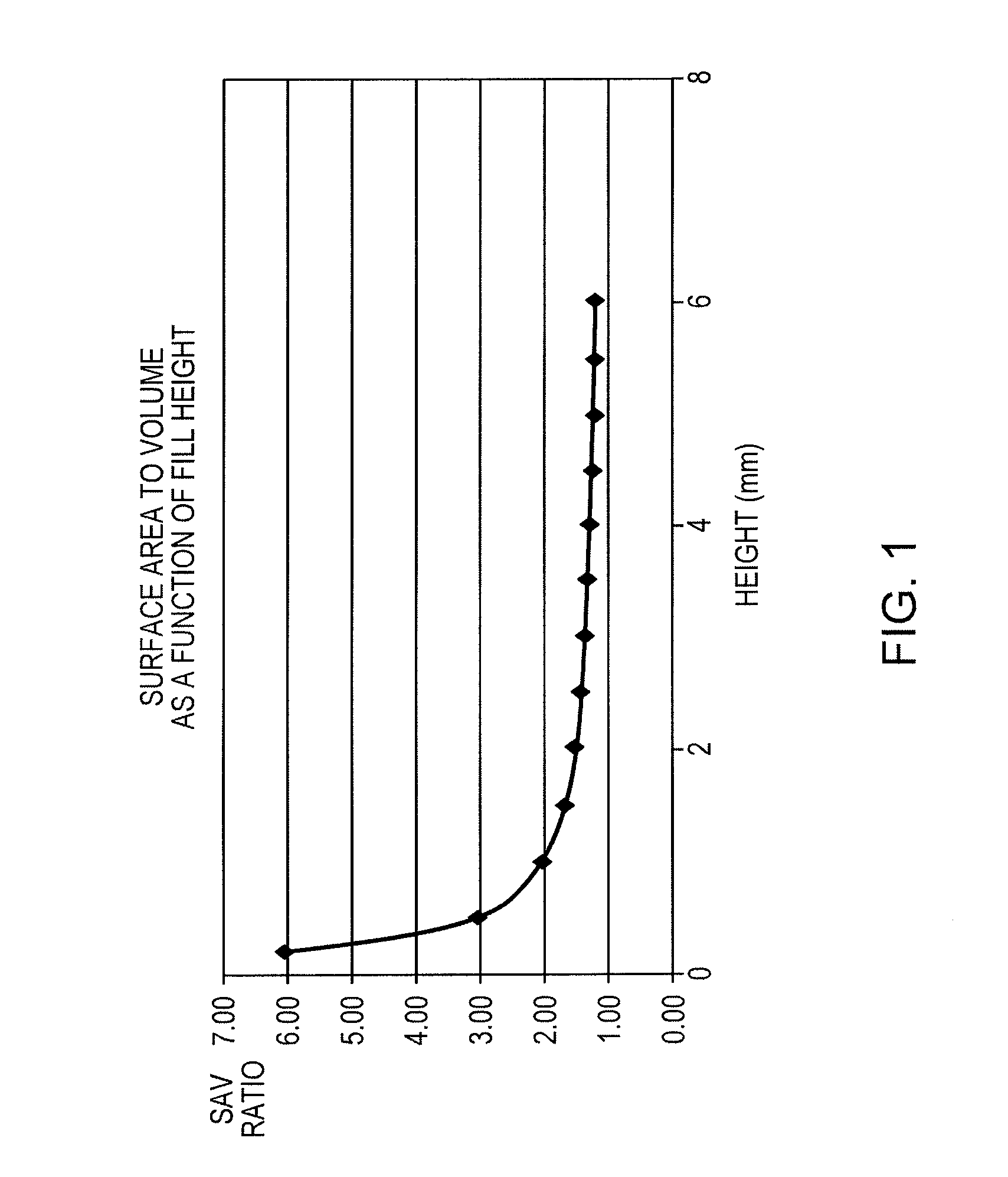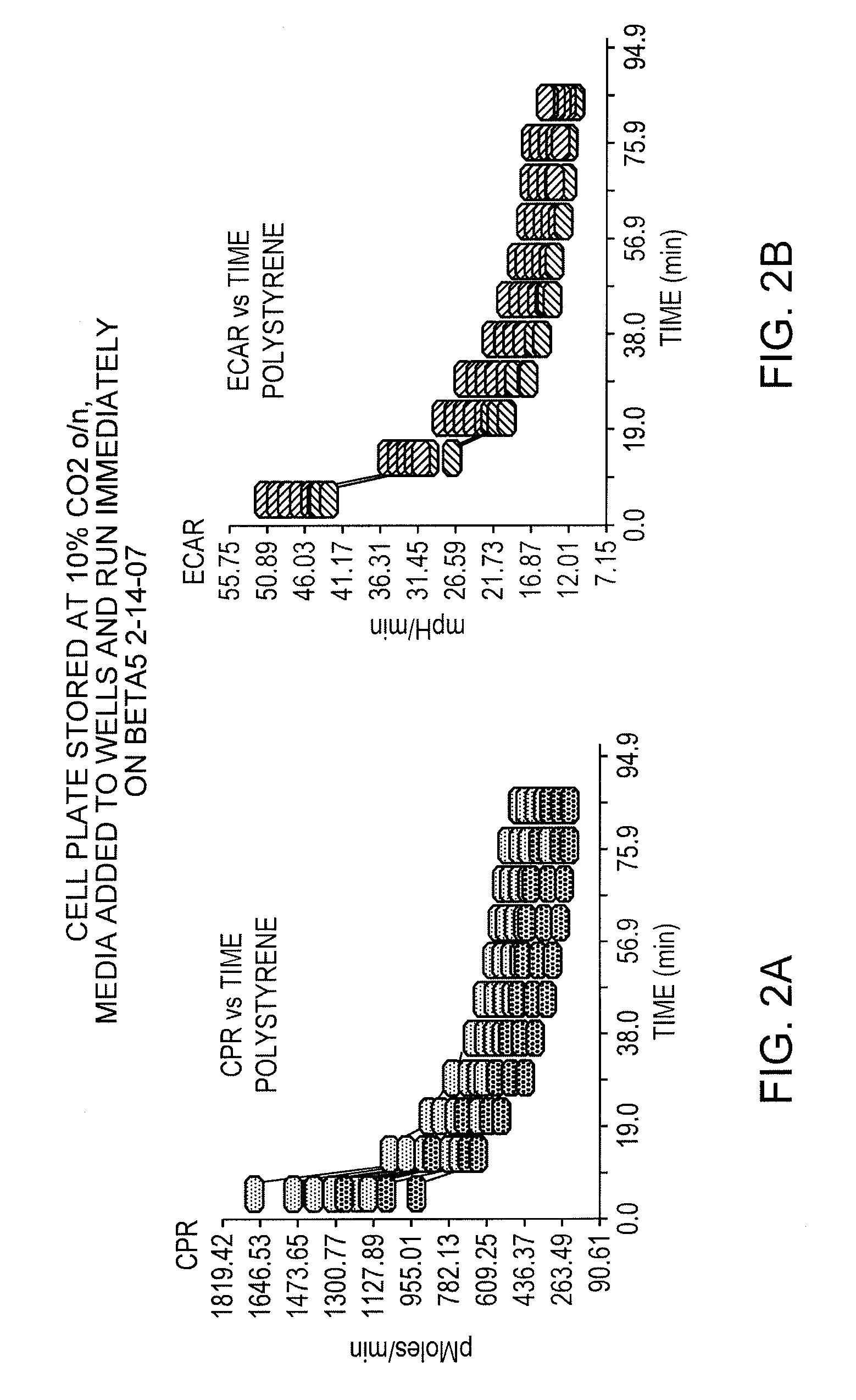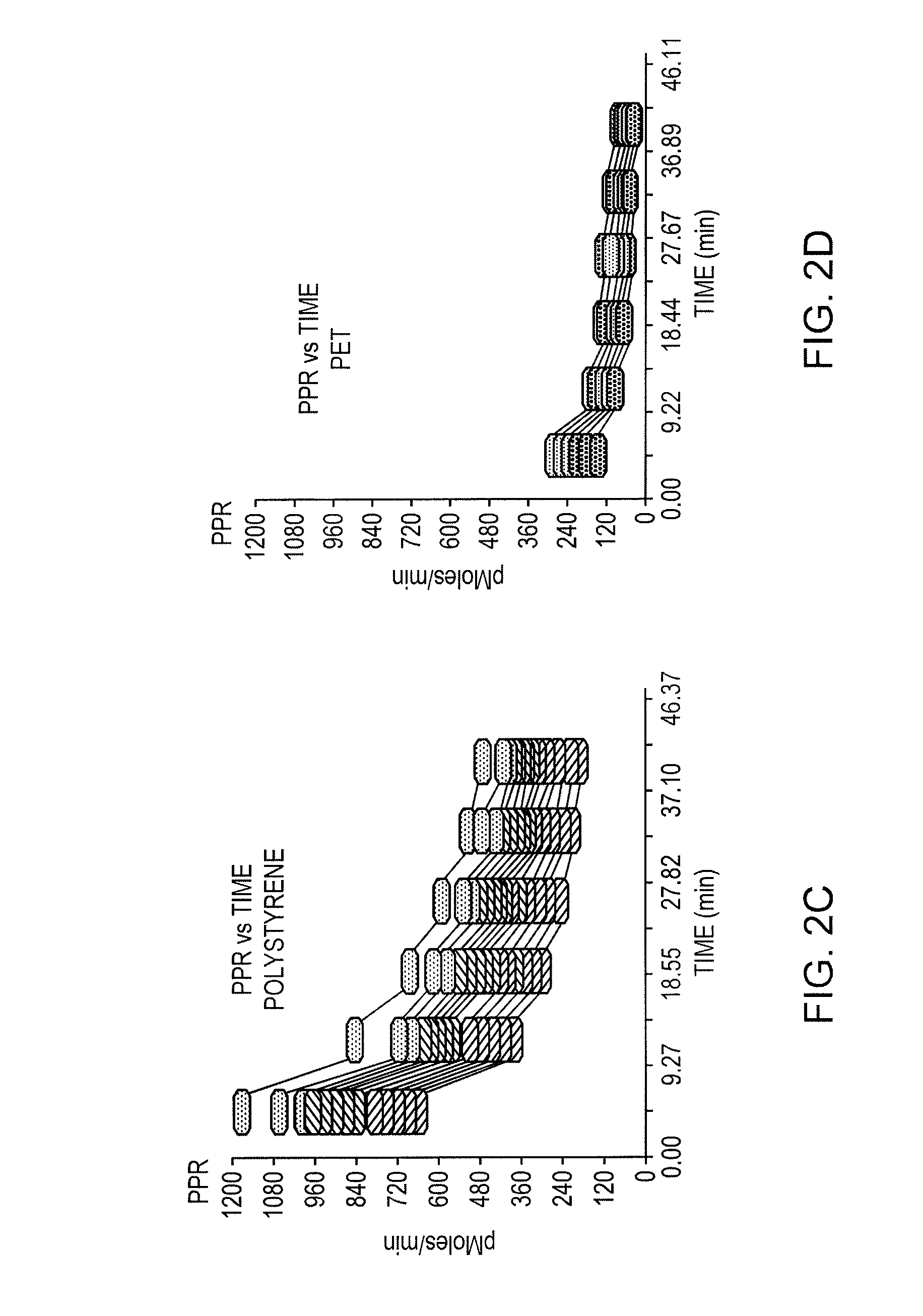Method and device for measuring extracellular acidification and oxygen consumption rate with higher precision
a technology of oxygen consumption rate and measurement method, applied in the field of high throughput screening techniques, can solve the problems of inconvenient measurement and variation of well to well, and achieve the effects of large fluctuations, increased surface-to-volume ratio of medium-holding vessel, and high background flux
- Summary
- Abstract
- Description
- Claims
- Application Information
AI Technical Summary
Benefits of technology
Problems solved by technology
Method used
Image
Examples
experiment 1
[0036] To determine background analyte flux rates in conventional well plates, phosphate-buffered cell culture media (Dulbecco's Modified Eagle's Medium, DMEM) was placed into the wells of XF 24 cell culture plates made from polystyrene. The plates were equilibrated overnight in an incubator at 37° C. and under a 10% CO2 atmosphere. After the equilibration period, the plates were removed from the incubator, and media within the wells was replaced with fresh unbuffered DMEM. Carbon dioxide production rate, pH change rate, and oxygen consumption rate were measured over a period of 85 minutes using an XF24 / 3 sensor head. The measurement volume was approximately 7 μl, and the SAV ratio approximately 6. FIGS. 2A-2B show the results of this test. The different grey scale data point values in each vertical column correspond to different wells. Note that while CO2 flux (CPR) and extracellular acidification rate (ECAR—here just pH change as no cells are present) declined significantly over t...
experiment 2
[0037] Aliquots of phosphate-buffered cell culture media were placed into wells of 24-well plates molded from polystyrene and from PET. The plates were equilibrated overnight in an incubator at 37° C. and under a 10% CO2 atmosphere, and then removed from the incubator. Media within the wells then was replaced with fresh unbuffered DMEM. Proton production rate was measured over a 45 minute period. FIGS. 2D and 2E show the PPR (in picomoles per minute) as a function of time for both the polystyrene plate (left) and the PET plate (right). Again, the different grey scale values correspond to different wells. As the data indicate, the background rate for PET is about fourfold lower than that for polystyrene, and its variation across the wells is significantly reduced.
experiment 3
[0038] C2C12 cells were placed into 24-well culture plates of polystyrene and PET, and differentiated over seven days into multicellular tubes. During the differentiation period, the cells remained in phosphate-buffered media in a 10% CO2 incubator. Following incubation, the plates were removed from the incubator, and the media was replaced with fresh unbuffered DMEM. Metabolic activity of the cell tubes was subsequently measured in the XF24 instrument, using a 24 / 3 sensor head to measure ECAR and PPR. The measurement volume was approximately 7 μl, and the SAV ratio approximately 6. The data are illustrated in FIGS. 3A and 3B, respectively. Along with the rates measured for Experiment 3, the rates for blank (polystyrene) samples from Experiment 2 are shown. Note the empty tubes (“control blanks”) and cell-containing tubes (“control tubes”) of polystyrene exhibit a decline in pH over time (ECAR and proton production rate data), whereas the polyethylene terephthalate blanks exhibit su...
PUM
| Property | Measurement | Unit |
|---|---|---|
| time | aaaaa | aaaaa |
| diameter | aaaaa | aaaaa |
| diameter | aaaaa | aaaaa |
Abstract
Description
Claims
Application Information
 Login to View More
Login to View More - R&D
- Intellectual Property
- Life Sciences
- Materials
- Tech Scout
- Unparalleled Data Quality
- Higher Quality Content
- 60% Fewer Hallucinations
Browse by: Latest US Patents, China's latest patents, Technical Efficacy Thesaurus, Application Domain, Technology Topic, Popular Technical Reports.
© 2025 PatSnap. All rights reserved.Legal|Privacy policy|Modern Slavery Act Transparency Statement|Sitemap|About US| Contact US: help@patsnap.com



